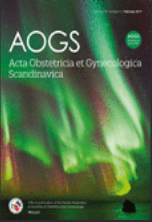Rahmawati E, Yang WV, Tzeng CR
Sir,
We were pleased to read the recent Letter to the Editor byBarra and Ferrero,1 who were interested in our recent publication inAOGS. 2 In that report, we demonstrated the decreased expressionof Tensin 1 (TNS1) in tissue and serum of women with endometrio‐sis after receiving gonadotropin‐releasing‐hormone agonist (GnRHa)treatment. In our study, we only recruited patients with ovarian en‐dometriosis, as mentioned in the Material and methods section. Weagree that the expression and the changes of TNS1 might be differ‐ent across endometriosis subtypes such as peritoneal endometriosisand deep infiltrating endometriosis. Further studies will be neededto investigate whether TNS1 is also significantly expressed in theother endometriosis subtypes. These studies will be helpful to un ‐derstand the possible underlying molecular mechanism of TNS1 inthe pathogenesis of endometriosis.We also agree with Barra and Ferrero that different hormonetherapies have their own targeting mechanism and particular phar‐macokinetics and pharmacodynamics. In our recently publishedstudy, the patients who were recruited in the treated group re‐ceived only one type of GnRHa, leuprorelin acetate (Leuplin Depot,Takeda Pharmaceutical Company Ltd., Osaka, Japan) 1.875 mg/month by subcutaneous injection, and we followed TNS1 expression1‐2 months after the treatment. We excluded patients who receivedother hormonal treatments or received a different dosage.TNS1 is involved in adhesion formation3 and promotes cell mi ‐gration. 4 Treatment with a high affinity estrogen receptor antago ‐nist downregulated TNS1 expression in murine uterus.5 Our recentreport provided new evidence that GnRHa treatment reduced theexpression of TNS1 in women with endometriosis. Down‐regulatedTNS1 might suppress the migration and adhesion of endometriotictissues. Further investigations are required to clarify TNS1 as a hor‐monal‐responsive molecule in the pathogenesis of endometriosis.We thank Barra and Ferrero for their interest in our findingsand for pointing out that adhesion molecules such as TNS1 couldbe potential therapeutic targets or biomarkers for monitoring theefficacy of GnRHa treatment in women with endometriosis.
Acta Obstet Gynecol Scand. 2019 Jun;98(6):812. doi: 10.1111/aogs.13566. Epub 2019 Mar 3. PMID: 30737768.
Acta Obstet Gynecol Scand. 2019 Jun;98(6):812. doi: 10.1111/aogs.13566. Epub 2019 Mar 3. PMID: 30737768.




